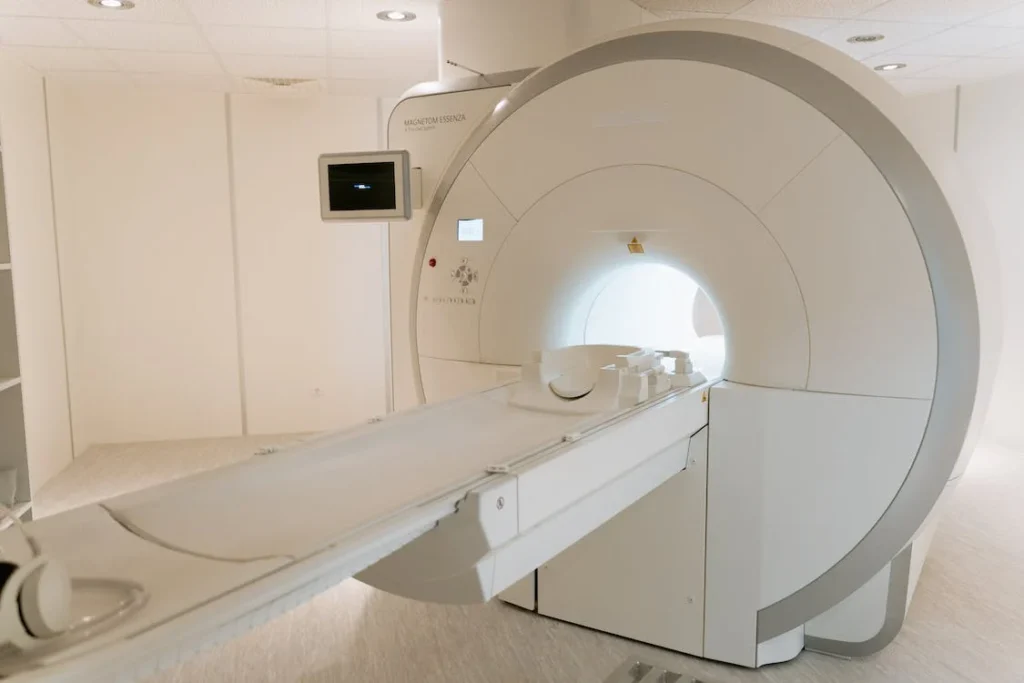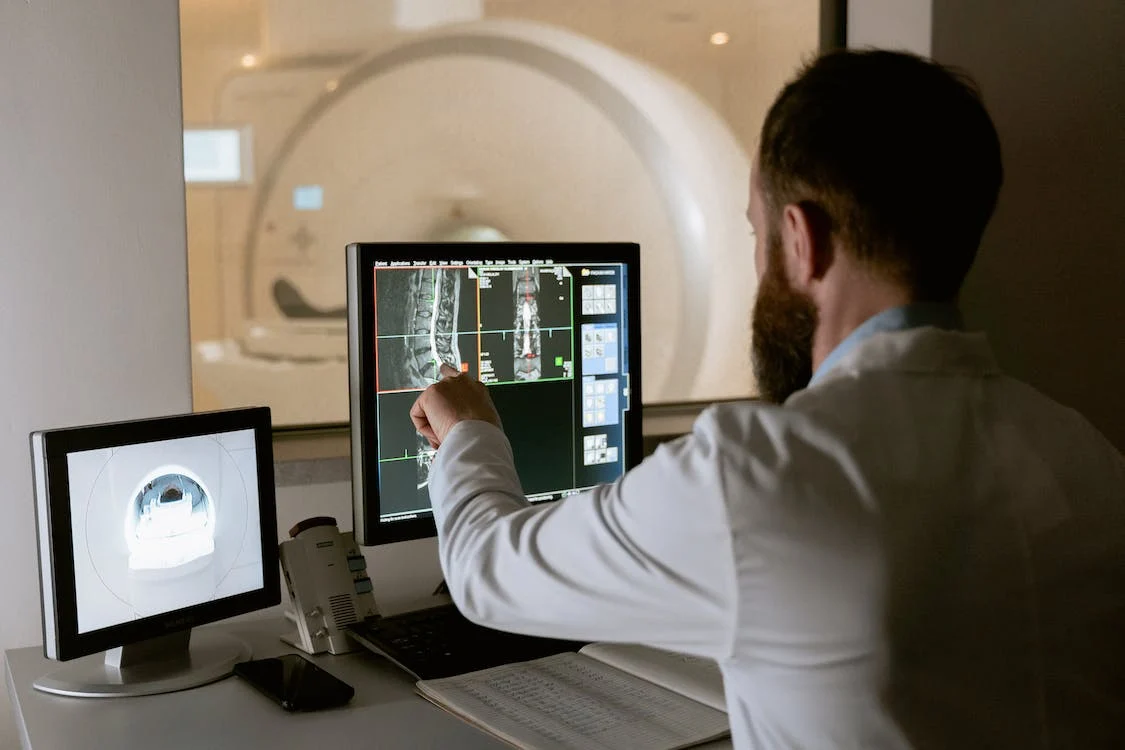Many of our clients are ordered to obtain an MRI after a car accident. But how does an MRI help to identify injuries? And how does it work? An MRI (Magnetic Resonance Imaging) is a medical imaging technique that uses a powerful magnetic field and radio waves to create detailed images of the body’s internal structures. In the context of a car accident, an MRI can be used to assess and identify injuries that may not be visible through other imaging methods like X-rays or CT scans. Here’s how an MRI can show your injuries after a car accident:
- Soft Tissue Injuries: One of the primary advantages of an MRI is its ability to provide detailed images of soft tissues such as muscles, tendons, ligaments, and organs. Soft tissue injuries are common in car accidents and may include sprains, strains, tears, or contusions. An MRI can help detect these injuries by providing clear visualization of the affected areas and revealing abnormalities such as swelling, inflammation, or structural damage.
- Spinal Cord and Disc Injuries: Car accidents can result in spinal cord injuries or damage to the intervertebral discs in the spine. An MRI can provide detailed images of the spinal cord and the discs, helping identify conditions like herniated discs, disc bulges, spinal stenosis, or nerve compression. These injuries can cause pain, numbness, tingling, or weakness, and an MRI can help diagnose and evaluate their extent.
- Brain Injuries: In some cases, car accidents can cause traumatic brain injuries (TBIs), ranging from mild concussions to more severe forms of brain damage. An MRI can be used to assess brain injuries by providing detailed images of the brain’s structures. It can help identify bleeding, swelling, contusions, or other abnormalities that may be present in the brain following a car accident.
- Internal Organ Injuries: Severe car accidents can result in injuries to internal organs such as the liver, kidneys, spleen, or lungs. An MRI can be useful in visualizing these organs and detecting any damage, bleeding, or abnormalities that may have occurred due to the impact.
It’s important to note that while an MRI is a valuable diagnostic tool, it should be used in conjunction with other clinical evaluations and assessments. Your healthcare provider will consider your symptoms, medical history, physical examination, and other diagnostic tests to make a comprehensive assessment of your injuries. If you have been involved in a car accident and are experiencing symptoms or suspect internal injuries, it’s crucial to seek immediate medical attention. A qualified healthcare professional will be able to determine if an MRI or any other diagnostic tests are necessary to evaluate your injuries accurately.

What is the typical cost of an MRI?
The cost of an MRI (Magnetic Resonance Imaging) can vary depending on several factors, including the location, the type of facility, and the specific scan being performed. Additionally, the cost may also vary based on whether the scan is performed with or without contrast agents.
In the United States, the average cost of an MRI scan without insurance can range from $400 to $3,500 or more. However, this is a general estimate, and the actual cost can vary significantly. For example, a simple MRI of a single body part, such as the knee or shoulder, may cost less compared to a more complex scan of the brain or spine.
If you have health insurance, the cost you pay for an MRI will depend on your specific insurance plan. Insurance companies often negotiate discounted rates with medical facilities, so the cost you pay may be significantly lower than the full price. It’s best to contact your insurance provider or the medical facility directly to get an accurate estimate of the cost based on your insurance coverage.
It’s important to note that healthcare costs can vary greatly between countries and even within regions, so the information provided above may not apply universally. It’s always a good idea to consult with local healthcare providers or your insurance company for precise and up-to-date cost information.

Will there by any additional referrals after an MRI is taken?
After an MRI is taken, additional referrals or follow-up actions may be necessary depending on the findings of the scan and the judgment of the healthcare provider. The purpose of an MRI is to obtain detailed images of the internal structures of the body to aid in diagnosis. The results of the MRI can provide valuable information about potential abnormalities or conditions.
If the MRI reveals any concerning findings, such as tumors, injuries, infections, or other abnormalities, the healthcare provider may recommend further evaluation or treatment. This could involve consultations with specialists, additional diagnostic tests, or specific treatments, depending on the nature of the findings.
The specific referrals or follow-up actions will vary depending on the individual case and the findings of the MRI. It’s important to discuss the results with your healthcare provider, who will provide guidance based on the specific circumstances and ensure appropriate follow-up care is provided.
